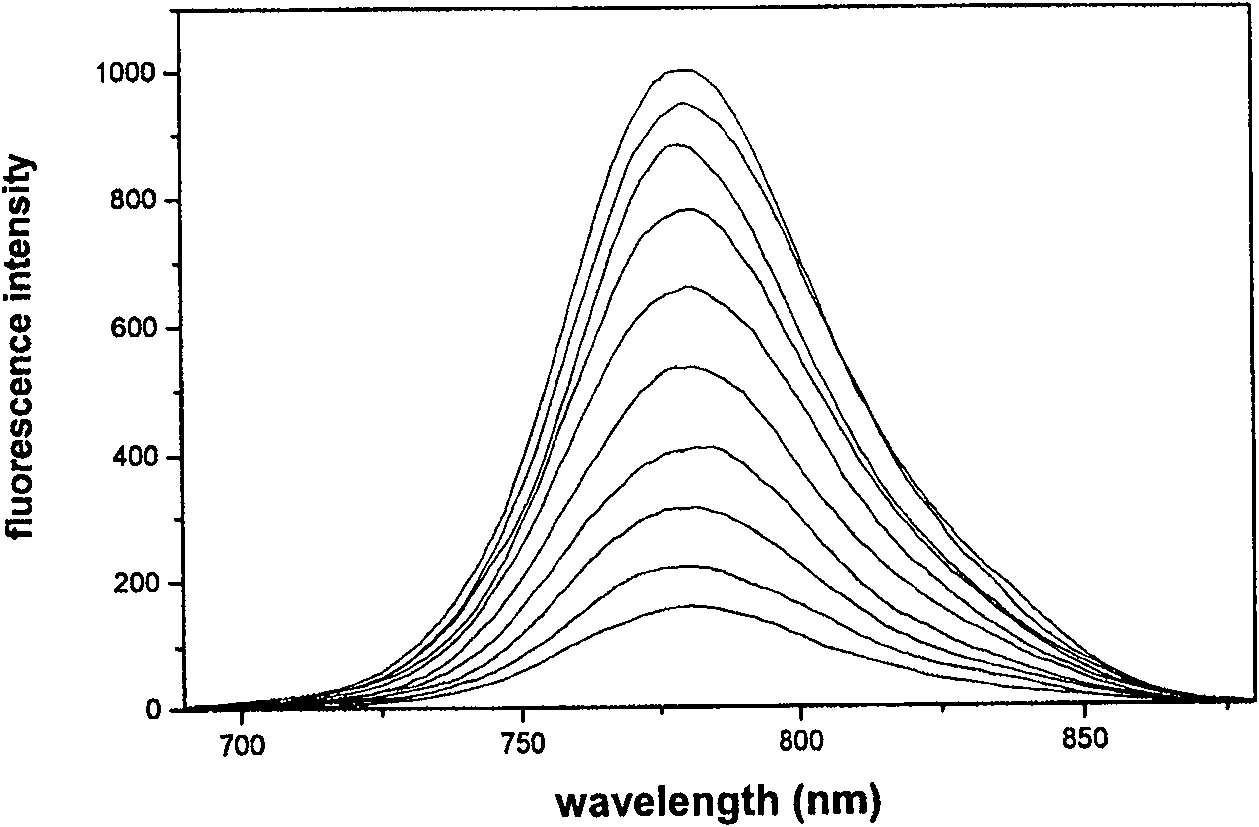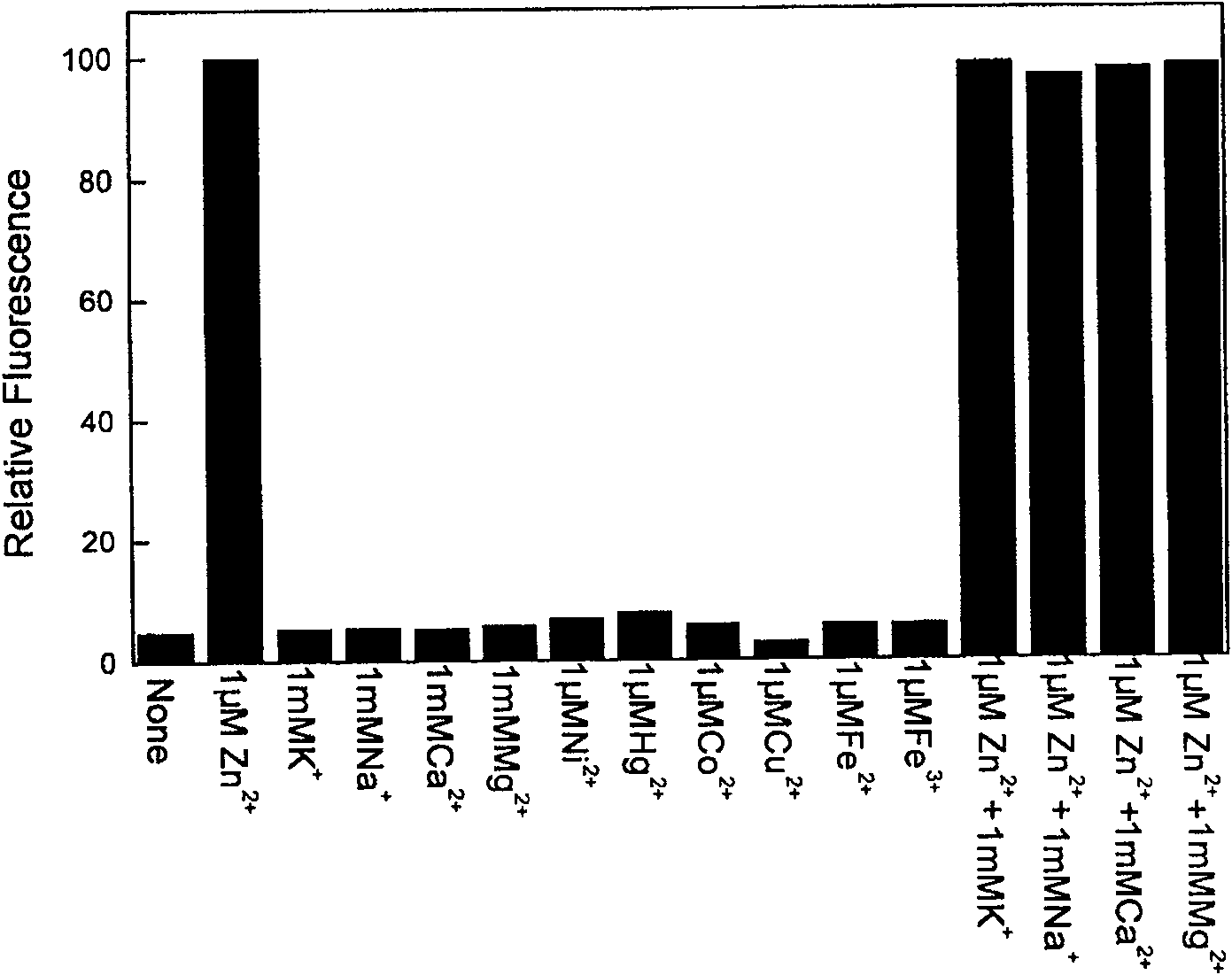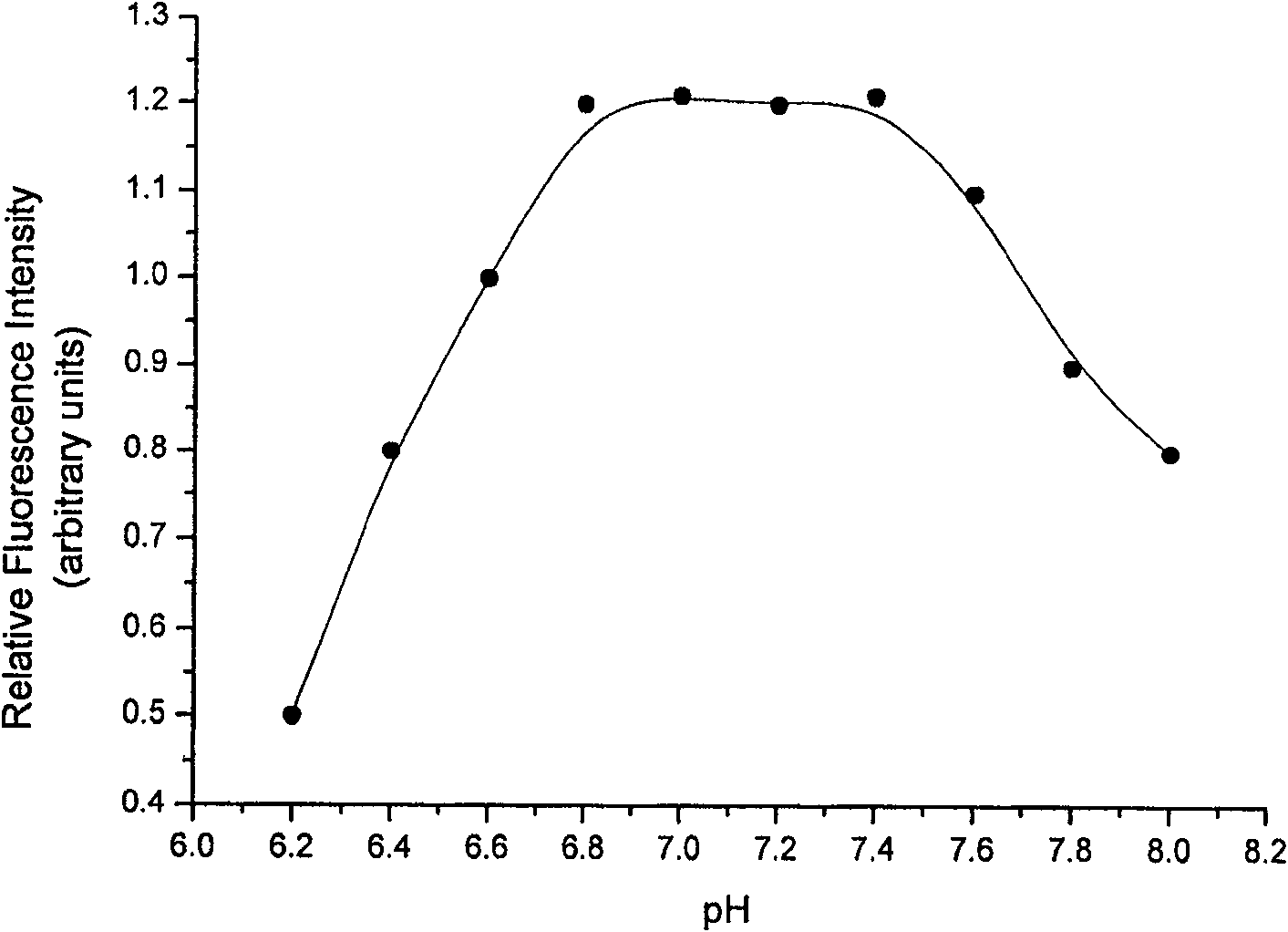Near infrared fluorescent probe for detecting zinc ion in cell and its synthesis method and use
A fluorescent probe and synthesis method technology, applied in the fields of biological detection technology and clinical medical detection, can solve the problems of fluorescence interference, complex structure, expensive instruments, etc., achieve low permeability and side effects, high measurement sensitivity, and simple synthesis method Effect
- Summary
- Abstract
- Description
- Claims
- Application Information
AI Technical Summary
Problems solved by technology
Method used
Image
Examples
Embodiment 1
[0042] Probe Synthesis
[0043]
[0044] In a 100ml three-necked flask, add 0.3 grams (5mmol) of propyl cyanine dye Cy.7 and 2 grams of bis(2-pyridylmethyl)amine with near-infrared fluorescence spectrum, add about 60ml of N,N-dimethyl form The amide was completely dissolved, and then reacted under nitrogen protection at 66°C for 4 hours, cooled to 15°C at room temperature, and then decompressed by a decompression oil pump and rotary evaporated at 35°C until evaporated to dryness. After cooling, it was dissolved with ether to form a solution. Then add 1.2 times the weight of water of diethyl ether and extract to layering at room temperature, get the extract I, and then add 0.8 times of the weight of the extract I to extract to layering with ethyl acetate, to obtain the extract II, and finally to Anhydrous magnesium sulfate was added to the extract II to dry it, and then it was decompressed by a vacuum oil pump and rotary evaporated at 35°C to remove ethyl acetate to obtain 0...
Embodiment 2
[0047] Replace two (2-pyridylmethyl) amines with quinoline sulfonamide, all the other are the same as in Example 1.
Embodiment 3
[0049] Replace bis(2-pyridylmethyl)amine with 4,7,10-trimethyl-1,4,7,10-tetraazacyclododecyl, and the rest are the same as in Example 1.
PUM
 Login to View More
Login to View More Abstract
Description
Claims
Application Information
 Login to View More
Login to View More - R&D
- Intellectual Property
- Life Sciences
- Materials
- Tech Scout
- Unparalleled Data Quality
- Higher Quality Content
- 60% Fewer Hallucinations
Browse by: Latest US Patents, China's latest patents, Technical Efficacy Thesaurus, Application Domain, Technology Topic, Popular Technical Reports.
© 2025 PatSnap. All rights reserved.Legal|Privacy policy|Modern Slavery Act Transparency Statement|Sitemap|About US| Contact US: help@patsnap.com



